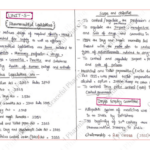CELL MEMBRANE
M. Pharm Ⅱ semester
Dept. of Pharmaceutics
www.DuloMix.com 1
CONTENTS:
Structure of cell
Plasma membrane
Lipid bilayer
Fluid mosaic model
Membrane protein
Functions of membrane protein
Functions of cell membrane.
www.DuloMix.com 2
STRUCTURE OF CELL
www.DuloMix.com 3
Plasma Membrane
cytoplasm
plasma
membrane
www.DuloMix.com 4
Structure of cell membrane
For a drug to be absorbed and distributed into organs
and tissues and eliminated from the body, it must pass
through one or more biological membranes/barriers at
various locations.
Such a movement of drug across the membrane is
called as ‘drug transport’.
The membrane is like a ‘mayonnaise sandwich’.
www.DuloMix.com 5
PLASMAMEMBRANE
www.DuloMix.com 6
The cellular membrane consists of a double layer of
amphiphilic phospholipids molecules arranged in such a
fashion that their hydrocarbon chains are oriented
inwards to form the hydrophobic or lipophilic phase and
their polar heads oriented to form the outer and inner
hydrophilic boundaries of the cellular membrane that
face the surrounding aq. Environment.
Globular protein molecules are associated on either side
of these hydrophilic boundaries.
The bio-membrane acts like a semipermeable barrier
permitting rapid and limited passage of some compounds
while restricting others.
www.DuloMix.com 7
www.DuloMix.com 8
# THE LIPID BILAYER :
The basic structural framework of the plasma membrane is the lipid
bilayer, two back to back layers made up of three types of lipid
molecules—–
# Phospholipids (75% of the membrane lipid)
# Cholesterol ( About 20%)
# Glycolipid (About 5%)
The bilayer arrangement occurs because the lipids are
Amphipathic molecule which means they have both polar and
nonpolar parts.
The polar head is hydrophilic.
The nonpolar parts is hydrophobic.
www.DuloMix.com 9
Phospholipids
Has a hydrophilic
(water loving head)
Hydrophobic (water
fearing) Tail
Made up mostly of
carbon (black)&
Hydrogen (light blue)
www.DuloMix.com 10
Phospholipid bi-layer
The cell membrane is made
up of 2 layers of
phospholipids.
The Hydrophilic heads face
out.
The Hydrophobic tails face
inward
www.DuloMix.com 11
Other Membrane components
Cholesterol makes the cell membrane more stiff and
less permeable.
www.DuloMix.com 12
Fluid Mosaic Model
www.DuloMix.com 13
➢Singer and Nicolson developed the fluid mosaic model
➢The phospholipids molecules orient themselves in the
bilayer with their hydrophilic heads facing outward. In this
way the heads face a watery fluid on either side – cytosol on
the inside and extracellular fluid on the outside.
➢Cholesterol molecules are weakly amphipathic. It is attached
with the polar heads of the phospholipids and glycolipids.
➢Cholesterol may increase or decrease fluidity depending
on other factors, such as the fatty acid composition of the
other lipids found in the membrane.
www.DuloMix.com 14
MEMBRANE PROTEIN
It categorized into:
1) Integral protein.
2) Peripheral protein.
3) Glycoprotein.
Integral Protein: It extends into or through the lipid bilayer
among the fatty acid tails and are firmly embedded in it. Most
integral proteins are transmembrane proteins, which means
that they span the entire lipid bilayer and protrude into both the
cytosol and extracellular fluid.
They are Amphipathic. The hydrophilic ends protrude into either
the watery extracellular fluid or the cytosol.
The hydrophobic regions extends among the fatty acid tails.
www.DuloMix.com 15
Peripheral Protein:
Are firmly embedded in the membrane. They are
attached more loosely with the polar heads of the
membrane lipids or with the integral Proteins.
Glycoprotein:
It acts as cell identity marker.
www.DuloMix.com 16
MEMBRANE PROTEIN
www.DuloMix.com 17
TRANSPORT PROTEINS – regulate the movement of
water-soluble molecules through the cell membrane.
RECEPTOR PROTEINS –recognizes and binds to specific
molecules. Often trigger some response by the cell such as
endocytosis or cell division.
RECOGNITION PROTEINS – identifies the cell as
belonging to a specific species or organ. Helps immune
system tell invading cells from cells belonging to the
organism.
www.DuloMix.com 18
Outside of cell
Some proteins cross Some proteins adhere one cell
the entire membrane. to another.
Some proteins penetrate the
bilayer only partially.
Peripheral proteins do not penetrate the
bilayer at all.
Inside of cell
www.DuloMix.com 19
FUNCTION OF THE MEMBRANE PROTEIN.
1.Integral membrane proteins acts as ion channels.
2.Integral membrane proteins acts as transporters.
3.Integral membrane proteins acts as receptors.
4.Integral membrane proteins acts as Linkers.
5.Integral membrane proteins acts as enzymes.
6.Glycoproteins acts as cell identity marker.
7.pheripheral proteins acts as enzymes and linkers.
www.DuloMix.com 20
Some functions of membrane proteins
1. Hydrophillic channel
Proteins of adjacent
selective for substance
cells hooked together
2. Actively pump to form a junction
substances
Sequential steps in a
Glycoproteins serve
pathway carried out by
as tags recognized
ordered enzymes in
by other cells
membrane
Chemical messenger binds to
protein causing a conformation
change that relays message to 1. Maintain cell shape
inside the cell and protein location
2. Coordinate extra-
www.DuloMix.com 21 intracellular changes
Cell Membranes Show Selective Permeability
oxygen, carbon glucose and other large,
dioxide, and other polar, water-soluble
small, nonpolar molecules; ions (e.g.,
molecules; some H+, Na+, K+, Ca++,
water molecules Cl–); water molecules
www.DuloMix.com 22
The Cell membrane functions to:
Control what goes in and out of a cell.
Anchors the cytoskeleton to help provide shape.
Attaches to a substrate outside of the cell or to other cells to help
form tissues
Controls the transportation of substances across the membrane by
using proteins as carriers and channels
Contains receptors that allow cells to communicate through chemical
messages
Contains recognition proteins which help identify the cell, so the
immune system does not attack it.
www.DuloMix.com 23
REFERENCE
Principles of anatomy and physiology 12th
edition by G.J.TORTORA & B.H.DERRICKSON
page no: 61 to 100
https://en.wikibooks.org/wiki/Structural_Bi
ochemistry/Membrane_Proteins
https://en.wikipedia.org/wiki/Cell_membra
ne
www.DuloMix.com 24
www.DuloMix.com 25










